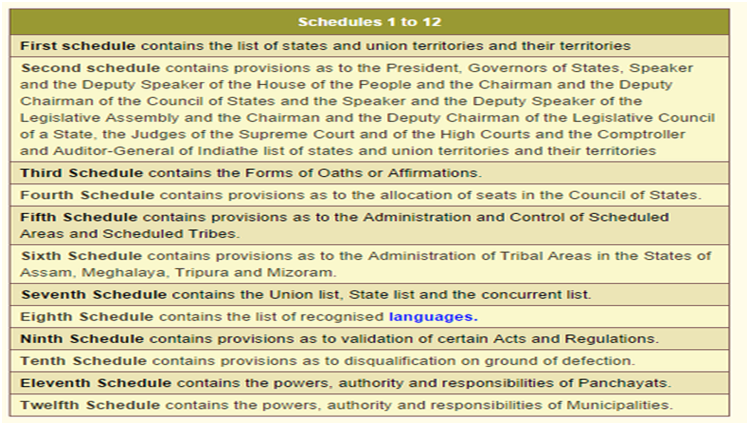Coral select algae partnerships to ease environmental stress: Study (GS Paper 3, Environment)

Context:
- Corals live symbiotically with a variety of microscopic algae that provide most of the energy corals require, and some algae can make coral more resilient to heat stress.
- In assessing one of the main reef builders in Hawai'i, Montipora capitata or rice coral, researchers found that the symbiont community in those corals varied significantly in different parts of Kaneohe Bay.
(SustainabilityTimes.com)
Basis of the study:
- While scientists have known that corals host a diversity of symbionts, it has been unclear if the algae species change from one area to another, and what would drive those changes.
- Cladocopium and Durusdinium are the two genera of algae most commonly hosted by corals in the Pacific Ocean.
- Cladocopium is found broadly, while Durusdinium is usually found in shallow corals exposed to elevated light or sea surface temperature, or in areas with high temperature variability; and is associated with increased resilience to thermal stress.
Observations made:
- Coral in the extreme north and extreme south of Kane'ohe Bay hosted less of the stress resilient symbiont, as these areas experience less light, less warming and less temperature variation.
- Thermal stress is the main threat affecting corals worldwide. Sea temperatures in many tropical regions have increased by almost one degree Celsius over the past 100 years and are continuing to warm.
- The fine-scale sampling of coral colonies across a relatively small spatial gradient (~10 km) within Kane'ohe Bay showed that algal symbiont community structure can respond to the conditions under which the coral is living. This sets the stage for understanding the role of environmental conditions in shaping how algal communities are distributed in space and time.
- Healthy coral reefs are some of the most biologically diverse and economically valuable ecosystems on Earth.
What’s next?
- During the 2019 bleaching event in Kane'ohe Bay, the research team re-sampled these corals and they are now analyzing the data.
- Their next step is to investigate how the corals with different symbionts from distinct parts of the bay responded to the bleaching event.
Population criterion for new Eklavya schools ‘impractical’, says parliamentary panel
(GS Paper 2, Social Justice)
Why in news?
- The Tribal Affairs Ministry intends to go ahead with its plan to build new Eklavya Model Residential Schools (EMRS) on 15 acres of land in all sub-districts.
- The EMRS willhave Scheduled Tribe communities of more than 20,000 people who make up at least 50% of their total population, despite a Parliamentary panel saying that this criterion is “impractical”.

(JobMaster.in)
Parliamentary Standing Committee:
- Earlier in 2022, the Parliamentary Standing Committee on Social Justice and Empowerment recommended immediate review of this criterion, pointing to significant difficulties in identifying and acquiring lands in several districts, especially in forested or hilly areas where a contigious 15-acre plot is hard to find.
- This criterion would also deprive scattered ST populations of the benefit of the Eklavya schools, the panel said.
Current status:
- The Tribal Affairs Ministry is pushing ahead, with the National Education Society for Tribal Students (NESTS) says that there is no process as of yet to even review the guidelines as suggested by the Standing Committee.
- President DroupadiMurmu is set to lay the foundation stones for seven more such schools in Jharkhand on Janjatiya Gaurav Divas on November 15.
- While Ministry officials said that 688 EMRS have been sanctioned so far, of which 392 are functional, only a total of 230 schools are functioning from their own buildings.
- However, as per data presented by the government to the Standing Committee as of the end of 2021-22, a total of 232 sanctioned EMRS were yet to begin construction.
About EMRS:
- Eklavya Model Residential School (EMRS) is a Government of India scheme to establish model residential schools for Indian tribals (Scheduled Tribes) across India.
- It is one of the flagship interventions of the Ministry of Tribal Affairs, Government of India and was introduced in the year 1997-98 to ensure tribal students get access to quality education in the remote tribal areas.
- The Union Budget for 2018-19 announced that every block with more than 50% ST population and at least 20,000 tribal persons will have Eklavya Model Residential Schools.
- The government has decided to set up 452 new schools across the country.
Jharkhand wants new quota Bill placed in Ninth Schedule
(GS Paper 2, Governance)
Why in news?
- Recently, the Jharkhand Assembly cleared two Bills, one increasing reservation in vacant government posts and services in the state to 77 per cent, and the second to use land records with 1932 as the cut-off year to determine domicile status the definition of ‘local residents’.

(Abhijithkanvas.blogspot.com)
Jharkhand Reservation of Vacancies in Posts and Services (Amendment) Bill, 2022’:
- The first Bill, ‘Jharkhand Reservation of Vacancies in Posts and Services (Amendment) Bill, 2022’, raised reservation to 77 per cent.
- Within the reserved category, the Scheduled Castes will get a quota of 12 per cent, up from 10 per cent; 27 per cent for OBCs, up from 14 per cent; 28 per cent for Scheduled Tribes, a 2 per cent increase; and 10 per cent for Economically Weaker Sections.
‘Jharkhand Definition of Local Persons and for Extending the Consequential, Social, Cultural and Other Benefits to Such Local Persons Bill, 2022’:
- The second Bill, ‘Jharkhand Definition of Local Persons and for Extending the Consequential, Social, Cultural and Other Benefits to Such Local Persons Bill, 2022’, is aimed at granting local residents “certain rights, benefits, and preferential treatment”
- over their land;
- in their stake in local development of rivers, lakes, fisheries;
- in local traditional and cultural and commercial enterprises;
- in rights over agricultural indebtedness or availing agricultural loans;
- in maintenance and protection of land records;
- for their social security;
- in employment in private and public sector; and,
- for trade and commerce in the state.
Why the need to include in Ninth Schedule?
- The 77 per cent reservation breaches the 50 per cent ceiling set by the Supreme Court in the landmark 1992 Indra Sawhney v Union of India verdict. However, placing a legislation in the Ninth Schedule shields it from judicial scrutiny.
Previous instances — Tamil Nadu’s case:
- The Tamil Nadu Backward Classes, Scheduled Castes and Scheduled Tribes (Reservation of Seats in Educational Institutions and of Appointments or Posts in the Services under the State) Act, 1993, reserves 69 per cent of the seats in colleges and jobs in the state government.
What is the Ninth Schedule?
- The Ninth Schedule contains a list of central and state laws which cannot be challenged in courts.
- Currently, 284 such laws are shielded from judicial review. Most of the laws protected under the Schedule concern agriculture/land issues.
- The Schedule became a part of the Constitution in 1951, when the document was amended for the first time. It was created by the new Article 31B, which along with 31A was brought in by the government to protect laws related to agrarian reform and for abolishing the Zamindari system. While 31A extends protection to ‘classes’ of laws, 31B shields specific laws or enactments.
- The First Amendment added 13 laws to the Schedule. Subsequent amendments in 1955, 1964, 1971, 1974, 1975, 1976, 1984, 1990, 1994, and 1999 have taken the number of protected laws to 284.
Are laws in the Ninth Schedule completely exempt from judicial scrutiny?
- While the Ninth Schedule provides the law with a “safe harbour” from judicial review, the protection is not blanket.
- When the Tamil Nadu law was challenged in 2007 (I R Coelho v State of Tamil Nadu), the Supreme Court ruled in a unanimous nine-judge verdict that while laws placed under Ninth Schedule cannot be challenged on the grounds of violation of fundamental rights, they can be challenged on the ground of violating the basic structure of the Constitution.
- The court clarified that the laws cannot escape the “basic structure” test if inserted into the Ninth Schedule after 1973, as it was in 1973 that the basic structure test was evolved in the Kesavananda Bharati case as the ultimate test to examine the constitutional validity of laws.
India cannot afford to ignore the GM crop revolution
(GS Paper 3, Science and Tech)
Why in news?
- As soon as the government took the decision to release India’s first genetically-modified (GM) food crop, Dhara Mustard Hybrid-11 (DMH-11) for “environment release”, some activists approached the Supreme Court to ban it for various reasons.
- The Supreme Court has ordered the status quo to be maintained till the next hearing.

(DowntoEarth)
Status of GM crops globally:
- There has been a global campaign in this regard by many activists. Yet, in reality, GM crops have spread around the world since 1996.
- By 2019, roughly 190 million hectares were under GM crops, led by corn and soyabean in the US, Brazil, Argentina, and canola (rapeseed/mustard) in Canada, with no harmful impact on human or animal health or the environment per se.
- Even Bangladesh has marched ahead with Bt brinjal. More than 70 countries have accepted the use of GM crops.
Bt cotton in India:
- Even within India, the first GM crop, Bt cotton, released in 2002 by the Vajpayee government. Atal Bihar Vajpayee envisioned that science could transform agriculture.
- He extended the original slogan of “jai jawan, jai kisan” (salutation to the soldier and the farmer), given by Lal Bahadur Shastri, to include “jai vigyan” (salutation to science).
Economic gain to farmers:
Concerns:
- The success of Bt cotton holds many lessons for policymakers but it is not free from controversy and debate.
- Several concerns have been expressed by NGOs, civil society groups and farmers’ groups from time to time to emphasise the risks associated with GM crops.
- Some of these include —
- enhanced sucking pest damage in Bt cotton;
- increase in secondary pests such as mired bugs and Spodoptera;
- emergence of pest resistance;
- environmental and health implications in terms of toxicity and allergenicity that can cause hematotoxin reactions in the human body and
- farmers’ exposure to a greater risk of monopoly in the seed business.
- Based on largely unproven fears, commercial release of herbicide-tolerant (HtBt) cotton, Bt brinjal and now GM mustard have been held under moratorium.
- This is despite the official clearance from the country’s biotech regulator, the Genetic Engineering Appraisal Committee (GEAC).
Conclusion:
- It was expected that India would be at the forefront of the gene revolution and emerge as a major export hub to other Asian and African countries. What the IT revolution has done in computer science, the Bt revolution could have done in agriculture.
- Unfortunately, policy paralysis on GM technologies from 2003 to 2021, under pressure from activists and ideologues, has cost the farmers a lot. India is no longer at the forefront.
- But it is still better to be late than never to catch up vis a vis the gene revolution. Dissent is a good sign in any democratic society and forms an essential part of checks and balances. But once the safety tests are done and the scientific body (GEAC) has given the green signal, what is needed is political leadership to keep the decision-making science-based.
Way Forward:
- The agriculture of tomorrow is going to be science-based, and the winners will be those who adopt it and develop it further today. Innovation is the name of the game, and “Jai Anusandhan” is a good slogan given by PM Modi.
- But it will have meaning only when the government goes ahead with not just GM mustard but also fast-tracks HtBt cotton, Bt brinjal, and even GM soya and corn.





